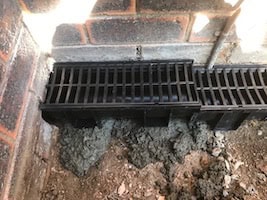That loud knocking sound when you turn a tap off, the washing machine changes cycle or when the toilet finishes refilling is called water hammer! Yes, it’s a thing. And the technical name for this is Hydraulic shock.
What causes water hammering?
It’s caused by a pressure surge of water in the pipes or when the water is shut off very quickly. Shock waves cause the pipes to rattle and this is the loud hammering sound you’re hearing.
In the worst cases, Hydraulic shock has the potential to damage pipe joins and connections. It can lead to ruptured pipes, pump and flow issues, leaks and property damage.
When plumbing is installed correctly.. and properly maintained, the air chambers inside the pipes soften the flow of water and you won’t have an issue. However, as we know, things are not always as they should be. If the issue goes unattended, it can lead to further problems and that usually means more expense.
When do I need to call a plumber?
A plumber can install a ‘water hammer arrestor’ which is a small air-charged chamber that absorbs pressure in the pipes when the taps are turned off. There are a few brands so it’s a good idea to check with your plumber to find which is the best one for your job.
A plumber can also assess whether a water-pressure regulator is needed. Water flowing into your home from the mains should be regulated at the safe, optimal pressure level. It will help to conserve water, saving you money, and also prolong the life of plumbing appliances (dishwashers, toilets, washing machines etc.)
BUT before calling in a plumber, you might want to try some troubleshooting with these DIY solutions. These are fixes that can identify the problem and eliminate banging. In some cases, it can be as easy as putting on a few more pipe clips.
How do I fix water hammer?
As always, look after your own safety, see our full disclaimer prior to using this information.
3 Things to check
1. Check pipe straps – add additional clips
If you have visible pipes at your house, have a look at them when someone turns a tap off. Take note of any rattling or vibrations in the pipes. If you can identify the source, the fix can be as easy as stabilizing the loose water supply lines with additional pipe clips to stop rattling.
2. Check for pipe straps that appear loose
Tighten the screws holding the loose pipe.
If the pipes are hidden behind the wall, you’ll need to trace to the point in the wall and cut a hole in the wall.
3. Pipes may need to be drained
This process relieves air that may be trapped in the line and is worth trying.
Here’s how:
Step 1
Shut off the main water valve to the property.
Step 2
Open the ‘highest’ cold-water tap in the home (by this I mean on the 2nd or 3rd floor) until water comes out .. and not air.
Step 3
Repeat for every cold water tap. Work your way down to the lowest level, or basement level of the home.
Step 4
Flush toilets
Step 5
Close all of the cold water taps, starting on the lowest floor and working to the top floor.
Step 6
Turn on the water supply to the property.
Step 7
Turn on the top tap and let it run until the splattering stops and then turn it off.
Water will be completely drained from all of the faucets and the air chamber should refill with air when the water is drained. This process may resolve the issue.
However if the water pressure in the pipes is too high, draining the pipes will only be a temporary fix.
If these fail to stop the banging in the pipes, we suggest it’s time to bring in a plumber to install a water hammer arrestor. A skilled plumber can provide expert guidance to choose the best option for your specific situation.
We recommend products based on our experience and benefit to our DIY community. If you use our links to make a purchase, we may earn a commission which is no additional cost to you. Read our disclosure policy here



